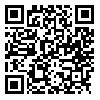Volume 37 -
J Dent Med-tums 2024, 37 - : 75-85 |
Back to browse issues page
Download citation:
BibTeX | RIS | EndNote | Medlars | ProCite | Reference Manager | RefWorks
Send citation to:



BibTeX | RIS | EndNote | Medlars | ProCite | Reference Manager | RefWorks
Send citation to:
rahjoo M, Tahani B. Assessment of spatial equity in distribution of dental centers based on Geographic Information System (GIS): Case study in Isfahan city. J Dent Med-tums 2024; 37 : 7
URL: http://jdm.tums.ac.ir/article-1-6271-en.html
URL: http://jdm.tums.ac.ir/article-1-6271-en.html
1- Dentist, Dental School, Isfahan University of Medical Sciences, Isfahan, Iran; Member of Research Center, Dental School, Isfahan University of Medical Sciences, Isfahan, Iran
2- Associate Professor, Department of Oral Public Health, Dental School, Isfahan University of Medical Sciences, Isfahan, Iran; Member of Dental Research Center, Dental research Institute, Dental School, Isfahan University of Medical Sciences, Isfahan, Iran
2- Associate Professor, Department of Oral Public Health, Dental School, Isfahan University of Medical Sciences, Isfahan, Iran; Member of Dental Research Center, Dental research Institute, Dental School, Isfahan University of Medical Sciences, Isfahan, Iran
Abstract: (625 Views)
Background and Aims: One of the most important consequences of the rapid growth of urbanization has been the unequal distribution of urban service specially health care services and escalation of social inequality of citizens. Therefore, this study was aimed to analyze the spatial distribution of dental centers in Isfahan from the perspective of spatial equity.
Materials and Methods: This analytical cross-sectional study was conducted in 2023 in Isfahan city. The required data including the population of the fifteen districts of Isfahan city, the data of the geographic municipal areas and the dental centers of Isfahan city were put into Excell. The population data were gathered from the statistical yearbook of population and housing. The dentists’ data were gathered from the Medical Council. Addresses of the dental centers were fed into the Google earth and were found on the traffic map of Isfahan. Using the Arc GIS 10.8 software and based on the Geographic Information System concepts, the spatial justice was analyzed. Moran's autocorrelation index was used to determine the distribution pattern (cluster, scattered, random). Hot spot analysis and nearest neighbor distance (centers in this radius would have more access) were used. Access ratios were analyzed using the ratio of population to the distance of each parcel to the dental centers and then were categorized as privileged to, semi and unprivileged.
Results: Z-score of Moran test was more than the expected score of 2.58 at 0.01 level of significant, indicating the cluster pattern of dental settings distribution in Isfahan. Moran's index (0.076) was much more than the expected equity coefficient (-0.000055), indicating again the cluster pattern of distribution which was not favorable in terms of spatial justice. The nearest neighbor distance analysis indicated that by moving from the center of the city to the outskirts of the city, access to dental centers decreased. Access analysis determined that privilege areas of the city were located mostly in central municipal areas and about 60% of these areas were limited to three municipal regions. Also, about 63% of the city area were categorized as unprivileged.
Conclusion: Distribution of dental centers in the city of Isfahan is not an equal distribution and the dental settings are mostly concentrated in the central areas of the city, not necessarily in high populated areas. There, this pattern necessitates the proper planning to establish dental settings in deprived and high-populated parts of the city.
Materials and Methods: This analytical cross-sectional study was conducted in 2023 in Isfahan city. The required data including the population of the fifteen districts of Isfahan city, the data of the geographic municipal areas and the dental centers of Isfahan city were put into Excell. The population data were gathered from the statistical yearbook of population and housing. The dentists’ data were gathered from the Medical Council. Addresses of the dental centers were fed into the Google earth and were found on the traffic map of Isfahan. Using the Arc GIS 10.8 software and based on the Geographic Information System concepts, the spatial justice was analyzed. Moran's autocorrelation index was used to determine the distribution pattern (cluster, scattered, random). Hot spot analysis and nearest neighbor distance (centers in this radius would have more access) were used. Access ratios were analyzed using the ratio of population to the distance of each parcel to the dental centers and then were categorized as privileged to, semi and unprivileged.
Results: Z-score of Moran test was more than the expected score of 2.58 at 0.01 level of significant, indicating the cluster pattern of dental settings distribution in Isfahan. Moran's index (0.076) was much more than the expected equity coefficient (-0.000055), indicating again the cluster pattern of distribution which was not favorable in terms of spatial justice. The nearest neighbor distance analysis indicated that by moving from the center of the city to the outskirts of the city, access to dental centers decreased. Access analysis determined that privilege areas of the city were located mostly in central municipal areas and about 60% of these areas were limited to three municipal regions. Also, about 63% of the city area were categorized as unprivileged.
Conclusion: Distribution of dental centers in the city of Isfahan is not an equal distribution and the dental settings are mostly concentrated in the central areas of the city, not necessarily in high populated areas. There, this pattern necessitates the proper planning to establish dental settings in deprived and high-populated parts of the city.
Article number: 7
Type of Study: Research |
Subject:
dental public health
Received: 2024/01/31 | Accepted: 2024/06/8 | Published: 2024/03/29
Received: 2024/01/31 | Accepted: 2024/06/8 | Published: 2024/03/29
Send email to the article author
| Rights and Permissions | |
 |
This work is licensed under a Creative Commons Attribution-NonCommercial 4.0 International License. |




